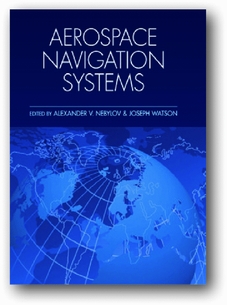
This is one of the most comprehensive books on the subject of Aerospace Navigation Systems that I have read and I have been reviewing books on this subject for the Royal Aeronautical Society for many years.
It comprises 373 pages of detailed intensive but still readable material from an international array of 18 contributors. There are a large breadth of topics covered and where the depth is necessarily limited in background subjects, there are references to seminal texts which practitioners in the field will recognise, such as Britting and Jazwinski.
The book is up-to-date and in ten parts that cover Inertial and Satellite Navigation Systems, Long and Short Range Radio Navigation, Radio Landing Systems, Correlated-Extremal Systems, Homing, Integrated Navigation Filtering, Displays and UAV Navigation.
The sections on Inertial and Satellite Navigation, as well as the section on Integrated Navigation Filtering, are particularly impressive with many practical issues being covered that I have not seen discussed in a textbook before. They are the sort of ideas that are handed down from a company expert to his successor, such as coning, sculling, size effect, carrier phase observables and tightly coupled GNSS/INS. There are also good treatments of more standard fare such as Reference Frames, Quaternions, and navigation algorithms. My only minor criticism would be the brevity of the discussion of gimballed systems, height-loops, sensor bandwidths and the effect of periodic aircraft manoeuvres on the build-up of Schuler oscillations.
The section on Correlated-Extremal Systems and Sensors, which is a topic rarely covered in navigation textbooks, was interesting and useful but I fear it could be fairly impenetrable to people not already used to the concepts. I felt that more of a preamble would have helped.
The section on UAV Navigation and Control was particularly interesting, but it did repeat some of the Inertial Navigation ideas from a previous section but used different terminology. This reinforced an impression that this book is a collection of learned pieces that are not quite a single whole.
In summary, this is a very good, comprehensive book which would be useful as a textbook for a student or as a trusted reference for an expert.


